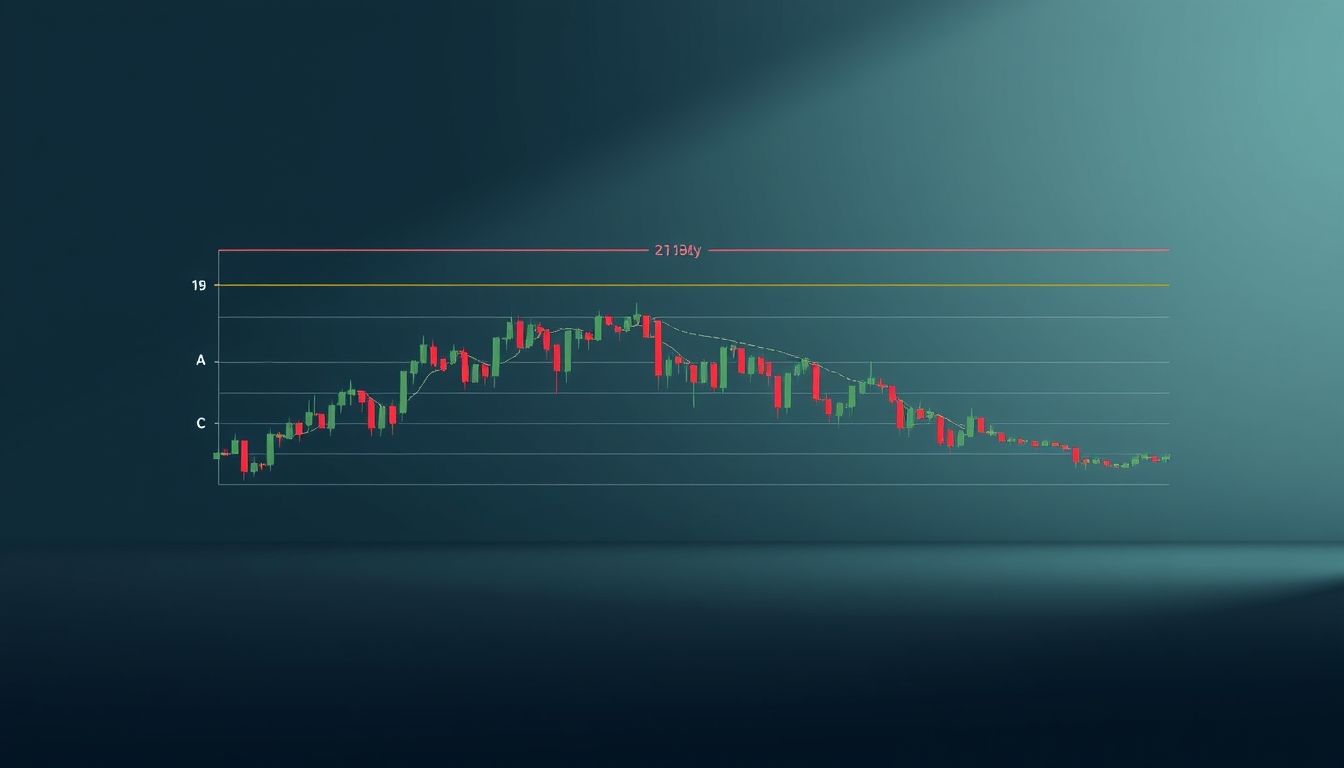مقدمة إلى نظرية موجات إليوت
نظرية موجات إليوت هي شكل من أشكال التحليل الفني الذي يستخدم لتوقع اتجاهات الأسواق المالية من خلال تحديد أنماط الموجات المتكررة. تم تطوير هذه النظرية من قبل رالف نيلسون إليوت في ثلاثينيات القرن الماضي، وتعتمد على فكرة أن أسعار الأسهم تتحرك في أنماط محددة تسمى "الموجات".
تعتمد النظرية على ملاحظة أن سلوك المستثمرين يتكرر في دورات نفسية، مما يؤدي إلى تشكيل أنماط سعرية يمكن التنبؤ بها. هذه الأنماط تتكون من موجات دافعة وموجات تصحيحية.
الفصل الأول: أساسيات نظرية موجات إليوت
1.1 ما هي موجات إليوت؟
تتكون دورة إليوت الكاملة من ثماني موجات. خمس موجات دافعة (1، 2، 3، 4، 5) تتحرك في اتجاه الاتجاه الرئيسي، وثلاث موجات تصحيحية (A، B، C) تتحرك عكس الاتجاه الرئيسي.
- الموجات الدافعة: تتحرك في اتجاه الاتجاه السائد وتتكون من خمس موجات فرعية.
- الموجات التصحيحية: تتحرك عكس الاتجاه السائد وتتكون من ثلاث موجات فرعية.
مثال: في سوق صاعد، تمثل الموجات 1، 3، و 5 حركات صعودية، بينما تمثل الموجات 2 و 4 تراجعات طفيفة قبل استئناف الصعود.
1.2 قواعد موجات إليوت
هناك ثلاث قواعد أساسية يجب الالتزام بها عند تطبيق نظرية موجات إليوت:
- الموجة 2 لا يمكن أن تتجاوز بداية الموجة 1.
- الموجة 4 لا يمكن أن تتداخل مع منطقة سعر الموجة 1.
- الموجة 3 يجب أن تكون الأطول بين الموجات الدافعة (1، 3، 5).
هام: كسر أي من هذه القواعد يشير إلى أن التحليل قد يكون خاطئًا ويجب إعادة تقييمه.
الفصل الثاني: الموجات الدافعة
2.1 خصائص الموجات الدافعة
تتميز الموجات الدافعة بحركتها القوية في اتجاه الاتجاه السائد. الموجة 3 غالبًا ما تكون الأطول والأكثر قوة.
مثال: في سوق الأسهم السعودي، إذا كان المؤشر العام في اتجاه صاعد، فستكون الموجات الدافعة هي الفترات التي يشهد فيها المؤشر ارتفاعات كبيرة.
2.2 أنواع الموجات الدافعة
هناك نوعان رئيسيان من الموجات الدافعة:
- الموجات الدافعة العادية: تتبع القواعد الثلاث الأساسية.
- الموجات الدافعة الممتدة: إحدى الموجات الدافعة (عادةً الموجة 3) تكون أطول بكثير من الموجتين الأخريين.
الفصل الثالث: الموجات التصحيحية
3.1 خصائص الموجات التصحيحية
تتحرك الموجات التصحيحية عكس الاتجاه السائد وتكون أكثر تعقيدًا من الموجات الدافعة. غالبًا ما تكون هذه الموجات عبارة عن تصحيحات طفيفة أو تجميع قبل استئناف الاتجاه الرئيسي.
3.2 أنواع الموجات التصحيحية
هناك عدة أنواع من الموجات التصحيحية، بما في ذلك:
- التصحيحات المتعرجة (Zigzag): تتكون من ثلاث موجات (A، B، C) وتكون حادة نسبيًا.
- التصحيحات المسطحة (Flat): تتكون من ثلاث موجات (A، B، C) وتكون أفقية نسبيًا.
- التصحيحات المثلثية (Triangle): تتكون من خمس موجات وتتجه نحو التقارب.
الفصل الرابع: نسب فيبوناتشي وموجات إليوت
تستخدم نسب فيبوناتشي بشكل شائع لتحديد مستويات الدعم والمقاومة المحتملة في موجات إليوت. يمكن استخدام هذه النسب لتوقع مدى عمق التصحيحات (الموجات 2 و 4) أو مدى امتداد الموجات الدافعة (الموجة 3).
مثال: غالبًا ما تصحح الموجة 2 بنسبة 38.2٪ أو 50٪ من الموجة 1، بينما قد تمتد الموجة 3 بنسبة 161.8٪ من الموجة 1.
الفصل الخامس: تطبيق موجات إليوت في التداول
5.1 تحديد الموجات
الخطوة الأولى هي تحديد الموجات على الرسم البياني. ابدأ بتحديد الاتجاه الرئيسي ثم ابحث عن الأنماط الموجية التي تتناسب مع نظرية إليوت.
5.2 تأكيد الإشارات
استخدم مؤشرات فنية أخرى، مثل المتوسطات المتحركة ومؤشر القوة النسبية (RSI)، لتأكيد الإشارات التي تحصل عليها من تحليل موجات إليوت.
5.3 إدارة المخاطر
ضع أوامر وقف الخسارة لحماية رأس المال الخاص بك. حدد نقاط الدخول والخروج بناءً على تحليل موجات إليوت ونسب فيبوناتشي.
نصيحة: لا تضع كل أموالك في صفقة واحدة. نوع محفظتك لتقليل المخاطر.
الفصل السادس: أمثلة عملية من السوق
6.1 تحليل سهم أرامكو
لنحلل حركة سهم أرامكو باستخدام موجات إليوت. (هنا يتم تحليل افتراضي لحركة السهم وتطبيق النظرية عليها). نفترض أن السهم مر بدورة صعودية كاملة، يمكننا تحديد الموجات الدافعة والتصحيحية وتوقع الحركة المستقبلية للسهم.
6.2 تحليل مؤشر تاسي
يمكن تطبيق نظرية موجات إليوت على المؤشر العام للسوق السعودي (تاسي) لتحديد الاتجاهات الرئيسية وتوقع التحركات المستقبلية. (هنا يتم تحليل افتراضي لحركة المؤشر وتطبيق النظرية عليها).
الفصل السابع: الأخطاء الشائعة في تطبيق موجات إليوت
هناك العديد من الأخطاء الشائعة التي يرتكبها المتداولون عند تطبيق نظرية موجات إليوت، بما في ذلك:
- عدم الالتزام بالقواعد الأساسية.
- محاولة فرض النظرية على السوق بدلاً من السماح للسوق بإظهار الأنماط.
- عدم استخدام مؤشرات فنية أخرى لتأكيد الإشارات.
الفصل الثامن: استراتيجيات التداول المتقدمة
8.1 استخدام الموجات الفرعية
يمكن تقسيم كل موجة دافعة أو تصحيحية إلى موجات فرعية أصغر. هذا يسمح بتحليل أكثر دقة وتحديد فرص تداول أفضل.
8.2 الجمع بين موجات إليوت وأنماط الشموع
يمكن دمج تحليل موجات إليوت مع أنماط الشموع اليابانية للحصول على إشارات تداول أكثر قوة.
الفصل التاسع: أدوات وموارد لمحللي موجات إليوت
هناك العديد من الأدوات والموارد المتاحة لمساعدة المتداولين على تطبيق نظرية موجات إليوت، بما في ذلك:
- برامج الرسوم البيانية التي تدعم تحليل موجات إليوت.
- الكتب والمقالات التي تشرح النظرية بالتفصيل.
- المواقع الإلكترونية والمنتديات التي تناقش تحليل موجات إليوت.
الفصل العاشر: الخلاصة والنصائح النهائية
نظرية موجات إليوت هي أداة قوية لتحليل الأسواق المالية، ولكنها تتطلب دراسة وممارسة متأنية. استخدمها بحذر وبالتزامن مع أدوات التحليل الفني الأخرى وإدارة المخاطر المناسبة.
نصيحة أخيرة: كن صبوراً ومثابراً. تعلم من أخطائك واستمر في تحسين مهاراتك في التحليل الفني.
إخلاء المسؤولية: هذا المقال هو لأغراض تعليمية فقط ولا يعتبر نصيحة استثمارية.



